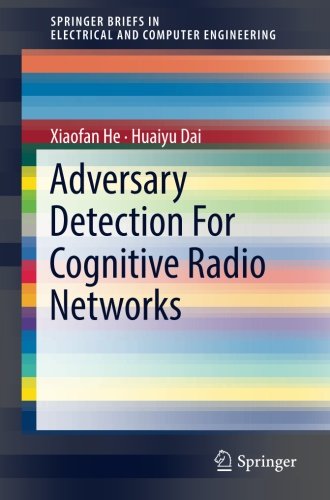

Most ebook files are in PDF format, so you can easily read them using various software such as Foxit Reader or directly on the Google Chrome browser.
Some ebook files are released by publishers in other formats such as .awz, .mobi, .epub, .fb2, etc. You may need to install specific software to read these formats on mobile/PC, such as Calibre.
Please read the tutorial at this link: https://ebookbell.com/faq
We offer FREE conversion to the popular formats you request; however, this may take some time. Therefore, right after payment, please email us, and we will try to provide the service as quickly as possible.
For some exceptional file formats or broken links (if any), please refrain from opening any disputes. Instead, email us first, and we will try to assist within a maximum of 6 hours.
EbookBell Team

5.0
50 reviewsThis SpringerBrief provides a comprehensive study of the unique security threats to cognitive radio (CR) networks and a systematic investigation of the state-of-the-art in the corresponding adversary detection problems. In addition, detailed discussions of the underlying fundamental analytical tools and engineering methodologies of these adversary detection techniques are provided, considering that many of them are quite general and have been widely employed in many other related fields.
The exposition of this book starts from a brief introduction of the CR technology and spectrum sensing in Chapter 1. This is followed by an overview of the relevant security vulnerabilities and a detailed discussion of two security threats unique to CR networks, namely, the primary user emulation (PUE) attack and the Byzantine attack.
To better prepare the reader for the discussions in later chapters, preliminaries of analytic tools related to adversary detection are introduced in Chapter 2. In Chapter 3, a suite of cutting-edge adversary detection techniques tailor-designed against the PUE and the Byzantine attacks are reviewed to provide a clear overview of existing research in this field.
More detailed case studies are presented in Chapters 4 – 6. Specifically, a physical-layer based PUE attack detection scheme is presented in Chapter 4, while Chapters 5 and 6 are devoted to the illustration of two novel detection techniques against the Byzantine attack. Concluding remarks and outlooks for future research are provided in Chapter 7.
The primary audience for this SpringerBrief include network engineers interested in addressing adversary detection issues in cognitive radio networks, researchers interested in the state-of-the-art on unique security threats to cognitive radio networks and the corresponding detection mechanisms. Also, graduate and undergraduate students interested in obtaining comprehensive information on adversary detection in cognitive radio networks and applying the underlying techniques to address relevant research problems can use this SpringerBrief as a study guide.